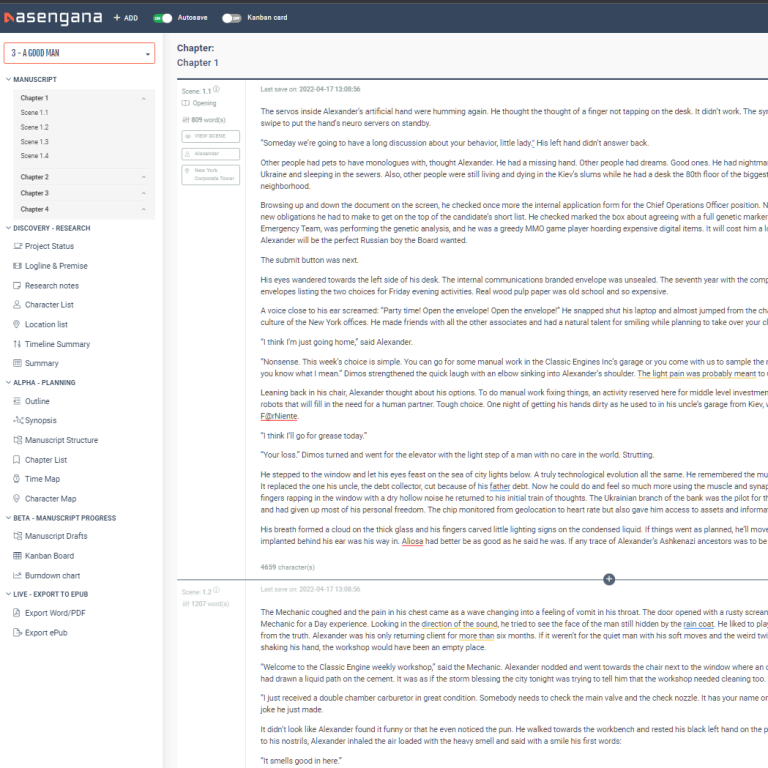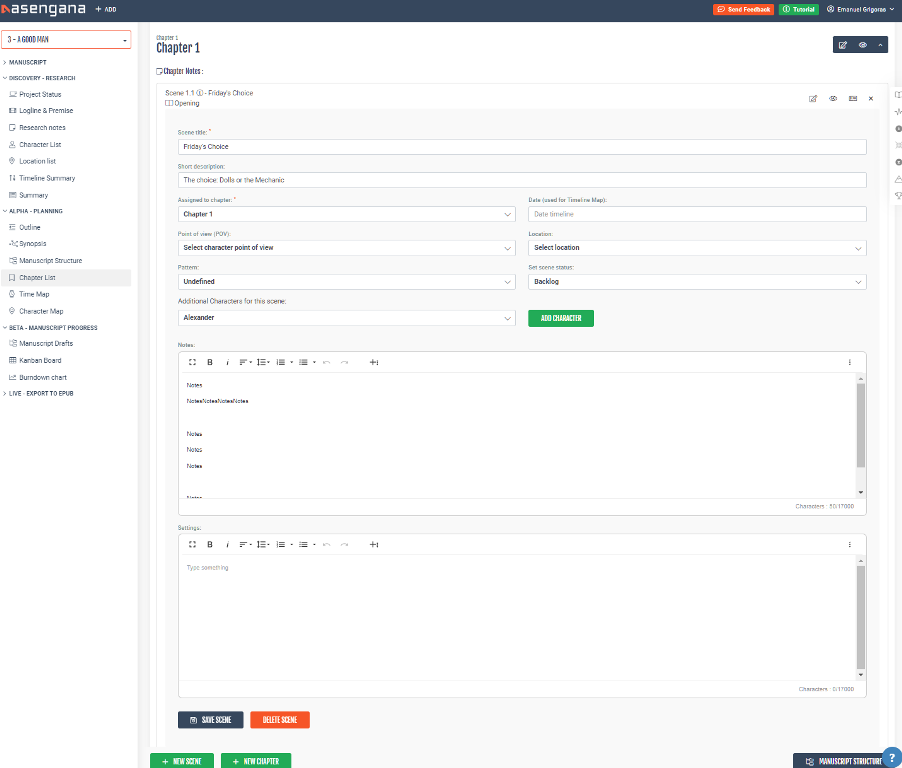Having a product “live” it’s just the beginning. Once we made sure we have all the basic functions writer’s need from a writing software, we moved towards continuous improvement. Sometimes improvement means a major change as is the case this month.
We continue to do user research and most writer’s needs go towards having complex information provided by simple interactions. One of the key performance indicators for the improvement of a user interaction is very simple: fewer clicks or fewer pages than before.
This is what we did with the current update: create a one-page for editing scenes and chapter details and a simpler more intuitive Manuscript Menu for every book/project.
Updates
1. Manuscript Menu
With the move to a new framework for writing a book – DABL = Discovery, Alpha, Beta, Live – restructured the menu from one when the secondary level required a page refresh and will permit only to view that group of items to one that allows a better overview.
Also, because one question that made us really feel like we failed some of our users was “where do I write?”. The manuscript itself was hidden as a level 2 menu and required 2 clicks to get to it.
The new structure starts with the Manuscript and continues with:
Discovery – Research. Here we grouped all the elements that are part of your research process: Research notes, Character profiles, Location files, Timeline Summary, etc.
Alpha – Planning. This includes the Manuscript Structure page, where you can use drag and drop to change the order or placement of the scenes in various chapters, the Chapter list, which we will talk more about below, as well as analytics feature like Time or Character Map.
Beta – Manuscript Progress. During the actual writing process you have access through split-screen to your research and planning elements. Under this menu you have the actual tools that will help you be more efficient as a writer:
- A Kanban Board allowing to manage better your time and your progress scene by scene
- The Burndown Chart to have a realistic view on your daily progress as well and an estimate of the work still needed to finish your book
- Manuscript Drafts page which allows you to save versions of your manuscript and restore them when needed.
Live – Export to ePub. The most important export function is export to ePub because this allows you to have a ready to publish book. You can also export in Word or PDF format.

2. Chapter List
This update was a long time coming because the original approach we had was moving you back and forth between individual scene pages, chapters, manuscript and it was a… complicated. We unified in one page with in page editing the chapter and scenes details. Editing multiple scene required going back to the manuscript so you can edit the next scene.
Every scene has several elements that are useful to be seen in the split screen on the Manuscript page: assigned chapter, date, POV, location, pattern, additional characters, notes, settings, etc. Now you can edit each one of them for every scene in the same page.
We kept the Manuscript Structure page where you can change the scene order separate because it requires a separate thinking process. While one page allows to narrow down the elements for a page, the other allows you to change the flow of the entire story.

3. UI improvements
There is also a list of small improvements as making more visible the buttons that activate the split screen on the Manuscript page and changes in the design of pages for various screen resolutions.
You can find out more about how we got to this solution from her: How to build a free tool for writers – the KISS way.
This is it for April 2022. Remember to share the news of the platform with your writer friends and use our Concierge Service Desk for comments and feedback.



